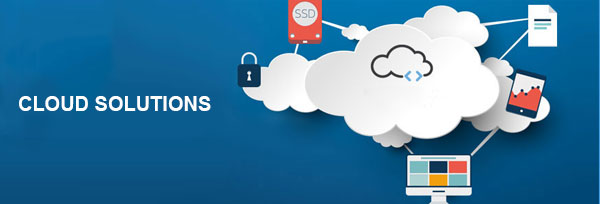CLOUD SOLUTIONS

Enhance your guards and diminish hazard with security answers for and from the cloud!
Techhive Media Group can help you move to the cloud with certainty. Arrangements from Techhive Media Group can help you oversee and ensure against dangers connected with all displays of distributed computing. Administrations are accessible to help you construct and convey secure applications, and you can better oversee and screen access to business basic applications with financially savvy cloud security administrations.
Cloud computing is a general term for the conveyance of facilitated administrations over the Internet. Cloud computing empowers organizations to devour register assets as a utility – simply like power – as opposed to building and keep up figuring bases in-house. Cloud computing guarantees a few alluring advantages for organizations and end clients. Three of the primary advantages of Cloud computing includes:
Self-administration provisioning: End clients can turn up figuring assets for a workload on-interest.
Versatility: Companies can scale up as figuring needs increment and after that scale down again as requests decline.
Pay per use: Computing assets are measured at a granular level, permitting clients to pay just for the assets and workloads they utilize.
Cloud computing administrations can be private, open or hybrid.
Despite the fact that Cloud computing has changed after some time, it has dependably been separated into three expansive administration classifications: foundation as an administration (IaaS), stage as an administration (PaaS) and programming as an administration (SaaS).
IaaS suppliers, for example, AWS supply a virtual server occurrence and capacity, and also application program interfaces (APIs) that give clients a chance to relocate workloads to a virtual machine (VM). Clients have a designated stockpiling limit and begin, stop, get to and arrange the VM and capacity as fancied. IaaS suppliers offer little, medium, huge, additional expansive, and memory-or process enhanced occurrences, notwithstanding altered examples, for different workload needs.
Software as a service (SaaS)
Cloud-based applications—or programming as an administration—keep running on far off PCs “in the cloud” that is claimed and worked by others and that interface with clients’ PCs by means of the Internet and, for the most part, a web program.
The advantages of SaaS
- You can join and quickly begin utilizing imaginative business applications
- Applications and information are open from any associated PC
- No information is lost if your PC breaks, as information is in the cloud
- The administration can progressively scale to utilization needs
Infrastructure as a service (IaaS)
IaaS as an administration furnishes organizations with registering assets including servers, systems administration, stockpiling, and server farm space on a compensation for every utilization premise.
The advantages of IaaS
- No compelling reason to put resources into your own particular equipment
- Foundation scales on interest to bolster dynamic workloads
- Adaptable, imaginative administrations accessible on interest
Public cloud
Public clouds are claimed and worked by organizations that offer fast access over an open system to moderate figuring assets. With open cloud administrations, clients don’t have to buy equipment, programming, or supporting base, which is claimed and oversaw by suppliers.
Key parts of Public cloud
- Inventive SaaS business applications for applications extending from client asset administration (CRM) to exchange administration and information investigation
- Adaptable, versatile IaaS for capacity and figure administrations on a minute’s notification
- Capable PaaS for cloud-based application advancement and arrangement situations
Private cloud
A private cloud is a framework worked exclusively for a solitary association, whether oversaw inside or by an outsider and facilitated either inside or remotely. Private mists can exploit cloud’s efficiencies while giving more control of assets and staying away from multi-tenure.
Key parts of private cloud
- A self-administration interface controls administrations, permitting IT staff to rapidly procurement, dispense, and convey on-interest IT assets
- Exceedingly robotized administration of asset pools for everything from process capacity to capacity, examination, and middleware
- Refined security and administration intended for an organization’s particular prerequisites
Hybrid cloud
Hybrid cloud utilizes a private cloud establishment joined with the vital incorporation and utilization of open cloud administrations. The fact of the matter is a private cloud can’t exist in disengagement from whatever remains of an organization’s IT assets and the general population cloud. Most organizations with private mists will develop to oversee workloads crosswise over server farms, private mists, and open mists—along these lines making half breed mists.
Key parts of Hybrid cloud
- Permits organizations to keep the basic applications and touchy information in a conventional server farm environment or private cloud
- Empowers exploiting open cloud assets like SaaS, for the most recent applications, and IaaS, for versatile virtual assets
- Encourages versatility of information, applications and administrations and more decisions for organization models
